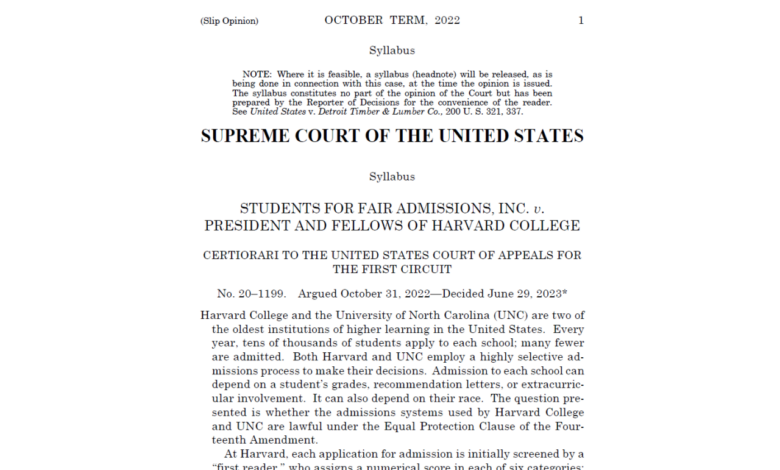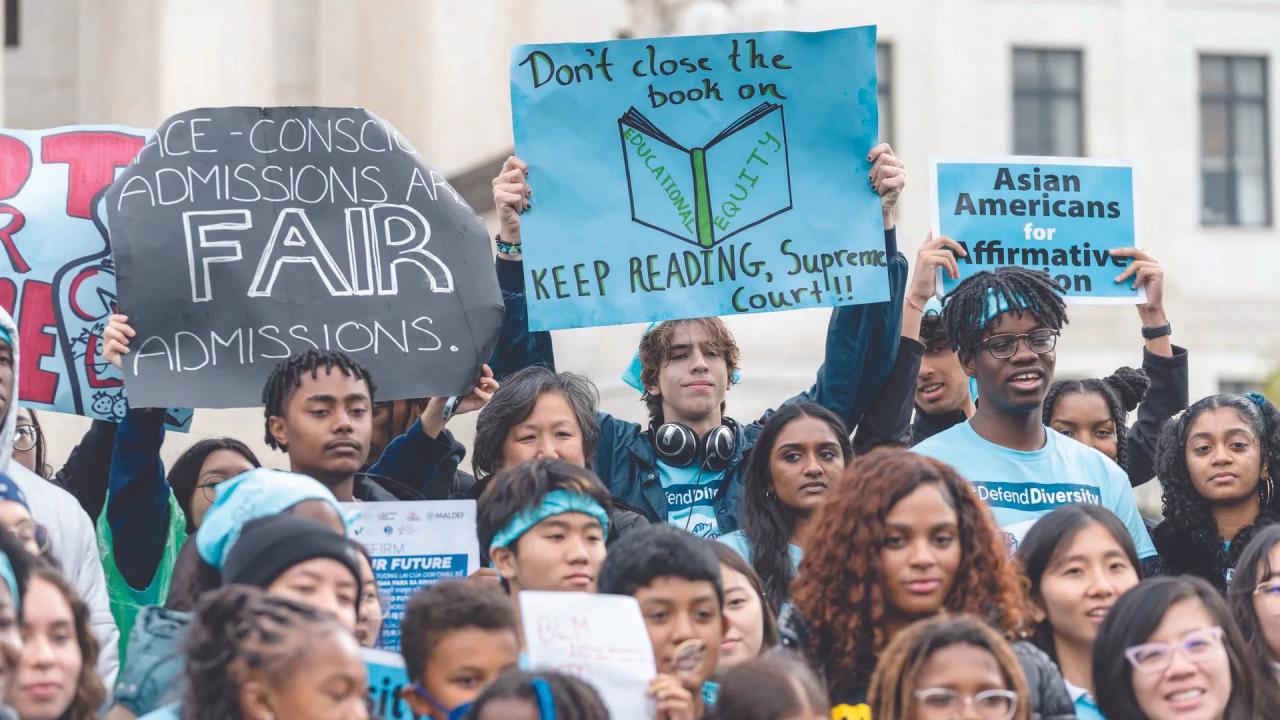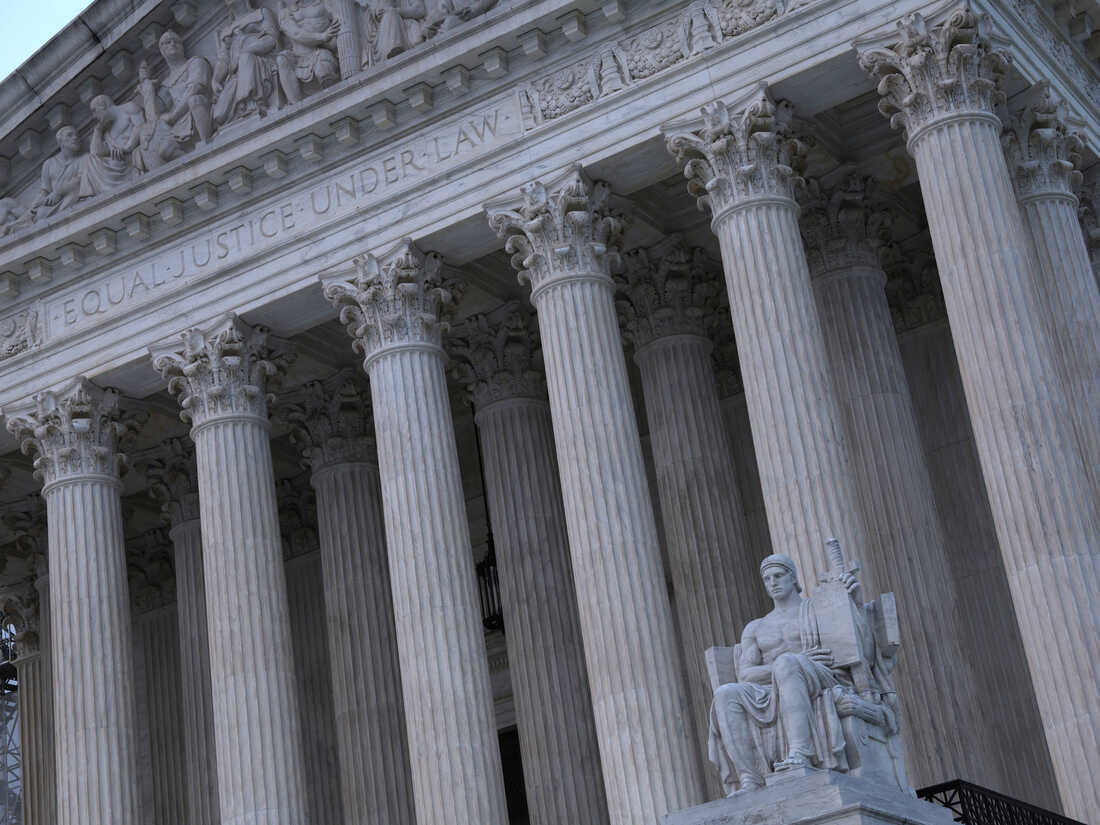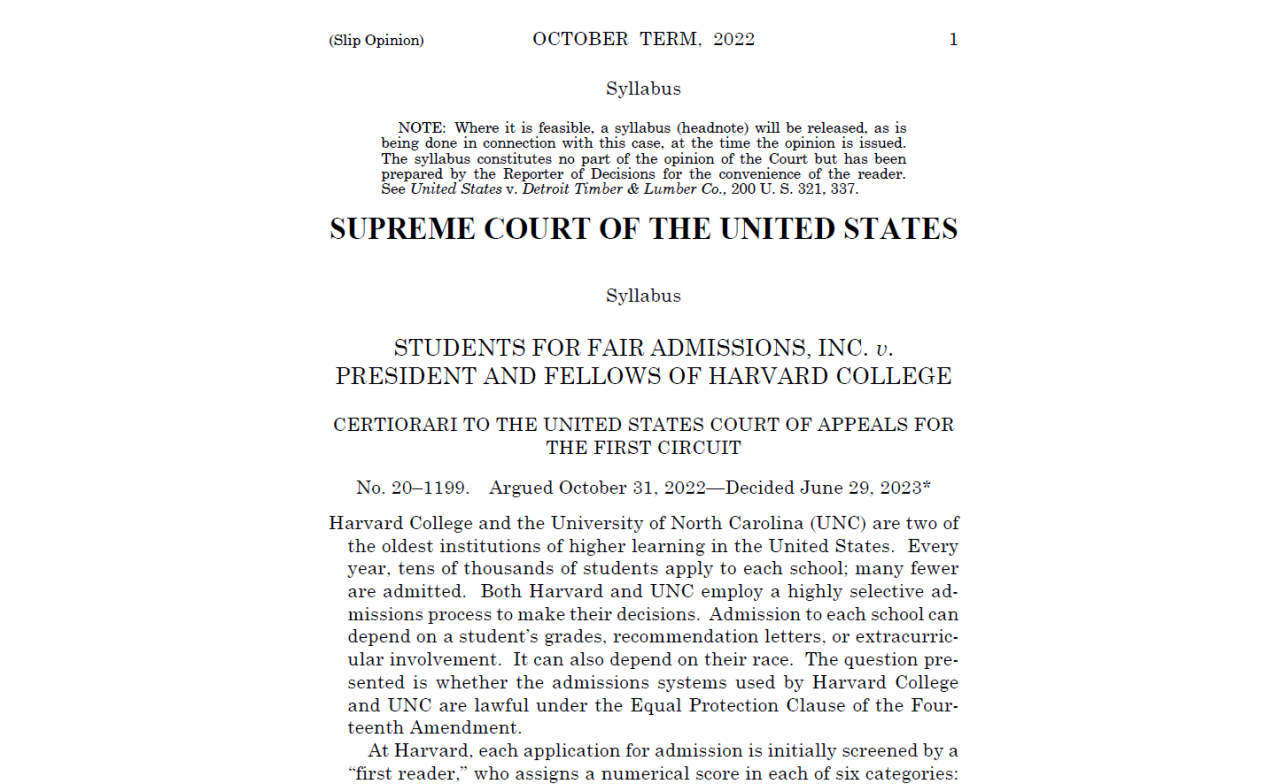
Healthcare Groups Criticize SCOTUS Affirmative Action Decision
Healthcare groups criticize SCOTUS affirmative action decision – a bombshell ruling that’s sent ripples through the healthcare industry. The Supreme Court’s decision to overturn affirmative action policies has sparked outrage and concern among healthcare professionals and organizations, raising serious questions about the future of diversity in the medical field. This isn’t just about numbers; it’s about ensuring equitable access to care for all patients and fostering a workforce that truly reflects the communities it serves.
The potential consequences are far-reaching, impacting everything from recruitment and retention of minority healthcare professionals to the quality of care received by underserved populations. Let’s dive into the details.
The core concern revolves around the impact on diversity initiatives. Healthcare groups fear a significant decline in minority representation across all levels, from medical students to hospital leadership. This could lead to a widening gap in healthcare access and quality for minority communities, perpetuating existing health disparities. The legal challenges and policy implications are complex, requiring careful consideration of existing anti-discrimination laws and the need for proactive measures to mitigate the negative effects of this ruling.
The future of diversity in healthcare hangs in the balance, prompting urgent calls for innovative strategies and collaborative efforts to ensure a more inclusive and equitable future.
Healthcare Groups’ Concerns
The Supreme Court’s decision to overturn affirmative action policies has sent ripples of concern throughout the healthcare sector. Many healthcare groups fear that this ruling will significantly hinder efforts to diversify the medical profession and ultimately impact the quality of care provided to underserved communities. The decision’s implications extend beyond simple numbers; it challenges the very principles of equity and inclusion that many healthcare organizations strive to uphold.
Impact on Diversity Initiatives
The ruling directly undermines decades of work dedicated to increasing diversity within healthcare. Affirmative action programs, while imperfect, played a crucial role in creating pathways for underrepresented minority groups to pursue medical education and careers. The removal of these programs risks reversing progress made in achieving a more representative healthcare workforce. This is particularly concerning given the established link between physician diversity and improved health outcomes for minority patients.
For example, studies have shown that patients are more likely to trust and communicate openly with doctors from similar racial or ethnic backgrounds, leading to better adherence to treatment plans and improved overall health.
Effects on Recruitment and Retention of Minority Healthcare Professionals
The Supreme Court’s decision will likely make it more difficult to recruit and retain minority healthcare professionals. Without affirmative action, medical schools and hospitals may struggle to attract a diverse applicant pool. This could lead to a less representative workforce, potentially exacerbating existing health disparities. Furthermore, the lack of a supportive and inclusive environment could discourage minority professionals from pursuing or remaining in healthcare careers.
Imagine a medical school with a predominantly white student body and faculty – a minority student might feel isolated and less supported, increasing the likelihood of them leaving the field. This loss of talent is a significant concern for the future of healthcare.
Potential Effects on Different Healthcare Specialties
The impact of the Supreme Court’s decision will vary across different healthcare specialties. Some specialties may be more affected than others due to pre-existing disparities in representation.
| Specialty | Potential Impact on Recruitment | Potential Impact on Retention | Overall Impact |
|---|---|---|---|
| Primary Care | Decreased recruitment of minority physicians, potentially worsening access to care in underserved communities. | Increased attrition of minority physicians due to lack of support and inclusive environment. | Significant negative impact on equitable access to care. |
| Surgery | Reduced diversity in surgical training programs, leading to less representation in operating rooms. | Potential for increased burnout and decreased job satisfaction among minority surgeons. | Moderate to significant negative impact on diversity and patient care. |
| Psychiatry | Challenges in recruiting minority psychiatrists, particularly those specializing in culturally competent care. | Potential for increased stress and burnout among minority psychiatrists due to cultural disparities. | Significant negative impact on mental health care access for minority populations. |
| Public Health | Decreased diversity in public health leadership, potentially hindering effective responses to health disparities. | Reduced representation of minority perspectives in policy development and implementation. | Significant negative impact on public health initiatives aimed at addressing health equity. |
Impact on Patient Care

Source: squarespace-cdn.com
Healthcare groups are already facing budget crunches after the SCOTUS affirmative action decision, which could impact future recruitment and diversity initiatives. This is further complicated by news that Kaiser Permanente just scrapped a $500 million Seattle bed tower project, as reported here: kaiser permanente nixes 500m seattle bed tower capital spending. The decision highlights the financial pressures on healthcare systems, potentially exacerbating the challenges posed by the Supreme Court ruling.
The Supreme Court’s decision on affirmative action has significant implications for the healthcare industry, potentially impacting the diversity of its workforce and, consequently, the quality and accessibility of patient care. A less diverse healthcare system risks exacerbating existing health disparities and hindering efforts to achieve health equity for all. The following sections explore these potential consequences in detail.
Reduced Diversity and Quality of Care
A diverse healthcare workforce, reflecting the demographics of the patient population, is crucial for providing culturally competent and effective care. Studies consistently demonstrate that patients feel more comfortable and trust their providers more when they share similar backgrounds or cultural understanding. When healthcare providers lack diversity, patients from minority groups may experience communication barriers, misunderstandings about their health concerns, and a lack of empathy, ultimately leading to poorer health outcomes.
For example, a lack of Spanish-speaking healthcare providers in a predominantly Hispanic community can lead to misdiagnosis and treatment delays due to language barriers. This lack of understanding can manifest in missed diagnoses, inappropriate treatment plans, and reduced patient adherence to medical advice.
Impact on Access to Healthcare for Minority Communities
The Supreme Court’s decision could indirectly limit access to healthcare for minority communities. If medical schools and other healthcare training programs experience a decrease in minority applicants and matriculants, it could lead to a less diverse future healthcare workforce. This shortage of providers from underrepresented groups could disproportionately affect access to care in underserved communities where these providers are often the primary source of healthcare.
This could further widen the existing health disparities between majority and minority populations. For instance, a reduction in the number of Black physicians might lead to decreased access to quality care for Black patients in rural areas already lacking sufficient medical resources.
Disparities in Health Outcomes Due to Workforce Homogeneity
A less diverse healthcare workforce can lead to disparities in health outcomes across different racial and ethnic groups. Implicit bias, even unintentional, can influence clinical decision-making. Studies have shown that racial and ethnic biases can lead to disparities in pain management, diagnosis of certain conditions, and treatment recommendations. A homogenous workforce, lacking diverse perspectives and experiences, is more susceptible to these biases, potentially leading to worse health outcomes for minority patients.
For example, research has indicated that Black patients may receive less aggressive treatment for cardiovascular disease compared to white patients, even when presenting with similar symptoms. This difference in treatment could be influenced by unconscious biases within a less diverse medical team.
Correlation Between Workforce Diversity and Health Equity Indicators
| Workforce Diversity (e.g., % of minority providers) | Health Equity Indicator 1 (e.g., Infant Mortality Rate in minority communities) | Health Equity Indicator 2 (e.g., Cancer Screening Rates in minority communities) | Health Equity Indicator 3 (e.g., Chronic Disease Management in minority communities) |
|---|---|---|---|
| High (e.g., >30%) | Lower | Higher | Improved |
| Moderate (e.g., 15-30%) | Moderate | Moderate | Moderate |
| Low (e.g., <15%) | Higher | Lower | Poorer |
Future of Diversity in Healthcare

Source: npr.org
The Supreme Court’s decision on affirmative action has sent ripples through many sectors, and healthcare is no exception. The ruling challenges established practices aimed at promoting diversity within medical schools and healthcare organizations, raising concerns about the future composition of the workforce and its ability to effectively serve a diverse patient population. This necessitates a proactive and strategic approach to ensure equitable representation continues to be a priority.The decision might significantly alter the landscape of diversity initiatives in healthcare.
Organizations will need to adapt their strategies, focusing on alternative approaches that are legally sound while still achieving the goal of a diverse and inclusive workforce. This will require creativity, flexibility, and a deep commitment to equitable representation at all levels.
Strategies to Promote Diversity and Inclusion
Healthcare organizations can employ several strategies to foster diversity and inclusion, even in light of the Supreme Court’s ruling. These strategies must move beyond race-conscious admissions and hiring practices, focusing instead on socioeconomic factors, geographic diversity, and holistic review processes that consider a wider range of applicant experiences and qualifications. This approach aims to create a more equitable playing field for all prospective employees, regardless of their background.
- Targeted Recruitment: Actively recruiting from underserved communities and partnering with organizations that support underrepresented groups in healthcare. This could involve attending career fairs at Historically Black Colleges and Universities (HBCUs), Hispanic-serving institutions, and other minority-serving institutions.
- Mentorship and Sponsorship Programs: Establishing robust mentorship and sponsorship programs to support the career advancement of individuals from underrepresented groups. Mentors provide guidance and support, while sponsors actively advocate for their mentees’ promotion and advancement within the organization.
- Bias Training and Education: Implementing comprehensive bias training for all staff to address unconscious biases and promote a culture of inclusivity. This training should be ongoing and regularly updated to ensure effectiveness.
- Holistic Review Processes: Adopting holistic review processes for admissions and hiring that consider a wide range of factors beyond academic performance, such as socioeconomic background, life experiences, and community involvement.
- Financial Aid and Scholarships: Providing financial aid and scholarships to students from disadvantaged backgrounds pursuing healthcare careers. This could include need-based scholarships, grants, and loan forgiveness programs.
Influence on Future Diversity Initiatives
The Supreme Court’s decision will likely lead to a shift in the focus of diversity initiatives. Instead of relying primarily on race-based affirmative action, organizations will need to explore alternative approaches that are both legally compliant and effective in promoting diversity. This may involve a greater emphasis on socioeconomic factors, geographic representation, and holistic review processes that consider a broader range of applicant experiences and qualifications.
There will be a greater need for data collection and analysis to demonstrate the effectiveness of these new strategies and to ensure accountability.
Examples of Successful Diversity and Inclusion Programs
Several healthcare organizations have already implemented successful diversity and inclusion programs that can serve as models. For example, some hospitals have established partnerships with local community organizations to recruit and train healthcare professionals from underrepresented groups. Others have created mentorship programs to support the career advancement of minority employees. These programs demonstrate that it is possible to create a diverse and inclusive workforce even without relying on race-based affirmative action.
The key is to focus on creating equitable opportunities for all, regardless of background.
Healthcare groups are already facing challenges, criticizing the recent SCOTUS affirmative action decision and its potential impact on diversity in the medical field. This comes at a time when the FTC is also cracking down on hospital mergers, as seen in their lawsuit to block the Novant Health and Community Health Systems acquisition, which could further limit access to care.
The combined effect of these events leaves many healthcare groups worried about the future of equitable and accessible healthcare.
Long-Term Effects on Healthcare Workforce Diversity
Imagine a bar graph. The X-axis represents time, showing the years following the Supreme Court decision. The Y-axis represents the percentage of underrepresented groups in the healthcare workforce. Before the decision, the graph shows a steady, though slow, upward trend. After the decision, the graph initially shows a slight dip, reflecting the immediate impact of the ruling.
However, over time, the graph plateaus, then gradually begins to rise again, albeit at a slower pace than before, representing the implementation of new, comprehensive diversity strategies. The upward trend is less steep, reflecting the challenges of achieving diversity without race-conscious policies, but it still demonstrates a commitment to inclusivity. The ultimate height of the bar, representing the long-term percentage of underrepresented groups, will depend on the effectiveness of the new strategies implemented by healthcare organizations.
This visual represents the potential for continued progress, albeit at a slower and more challenging pace.
Reactions from Different Stakeholders
The Supreme Court’s decision on affirmative action sent shockwaves through the healthcare industry, eliciting a diverse range of responses from various stakeholders. The reactions weren’t monolithic; instead, they reflected the unique perspectives and priorities of different organizations and their leaders, shaped by factors such as size, location, and the specific composition of their workforce.The varied responses highlight the complex interplay of legal, ethical, and practical considerations surrounding diversity and inclusion in healthcare.
Understanding these differing perspectives is crucial for navigating the challenges ahead and fostering constructive dialogue to ensure equitable access to healthcare for all.
Reactions of Major Hospital Systems
Large hospital systems, often with extensive resources and established diversity, equity, and inclusion (DEI) programs, expressed significant concern over the ruling’s potential impact on their ability to maintain a diverse workforce. Many issued public statements emphasizing their commitment to DEI and outlining strategies to mitigate the negative consequences of the decision. For instance, some systems indicated they would redouble efforts to recruit from underrepresented minority groups through alternative pathways, focusing on outreach programs and mentorship initiatives.
The SCOTUS affirmative action decision has rightly sparked outrage amongst healthcare groups, concerned about its impact on diversity within the medical field. But amidst the legal battles, we need to consider innovative solutions like those explored in this insightful article on reimagining collaboration in senior care a technology driven approach , which highlights how tech can improve access and equity.
Ultimately, the fight for equitable healthcare requires both legal action and creative technological advancements to address systemic inequalities.
Others voiced fears that the ruling might lead to a decrease in the number of minority physicians and healthcare professionals, ultimately impacting the quality of care for underserved communities. The size and resources of these systems allowed for a more robust and immediate response compared to smaller organizations.
Perspectives from Smaller Healthcare Organizations, Healthcare groups criticize SCOTUS affirmative action decision
Smaller hospitals and clinics, often facing tighter budgets and fewer resources, expressed similar concerns but also highlighted the practical challenges of implementing alternative recruitment strategies. Their reactions often focused on the immediate financial and logistical implications of the ruling. For example, some rural hospitals, already struggling with workforce shortages, worried that the decision would exacerbate their difficulties in attracting and retaining qualified minority professionals.
Their limited resources may hinder their ability to develop and sustain comprehensive DEI initiatives. The differences in response reflect the disproportionate impact on organizations with fewer resources to adapt to the changes brought about by the ruling.
Medical School Responses and Actions
Medical schools, pivotal in shaping the future healthcare workforce, reacted with a mix of apprehension and determination. Many expressed their commitment to maintaining diverse student bodies and exploring legal avenues to ensure continued compliance with federal guidelines promoting equal opportunity. Some medical schools with robust existing DEI programs announced their intention to intensify their efforts in identifying and supporting talented students from underrepresented backgrounds, potentially expanding scholarship programs and mentorship initiatives.
Others indicated a need for further legal counsel to navigate the complexities of the ruling and ensure continued compliance. The responses varied, reflecting the diversity of approaches and resources among different institutions.
Professional Organizations’ Collective Action
Major healthcare professional organizations, representing physicians, nurses, and other healthcare professionals, largely condemned the ruling and pledged to work together to advocate for policies that support diversity and inclusion in the healthcare workforce. These organizations represent a powerful collective voice, capable of influencing policy and shaping the future of the healthcare industry. Their responses included public statements, lobbying efforts, and the development of new initiatives to promote diversity and inclusion.
The potential for collaboration and collective action among these organizations is substantial and could prove crucial in mitigating the negative consequences of the Supreme Court’s decision.
Diversity of Opinions Among Healthcare Leaders
While a majority of healthcare leaders expressed concern about the ruling, there was also a spectrum of opinions regarding its potential consequences and the best strategies for responding. Some leaders emphasized the importance of focusing on merit-based admissions and hiring practices, while others advocated for a more holistic approach that considers factors beyond academic achievement. Some leaders expressed optimism that the ruling would not significantly impact diversity in healthcare, while others voiced deep skepticism.
This diversity of opinions reflects the complexity of the issue and the lack of a single, easy solution. The differing perspectives highlight the need for open dialogue and collaboration among healthcare leaders to develop effective strategies for promoting diversity and inclusion in the face of this significant legal challenge.
Last Recap

Source: politico.com
The Supreme Court’s decision on affirmative action has ignited a firestorm within the healthcare community. The concerns are valid and far-reaching, impacting everything from patient care to the very fabric of a diverse and inclusive healthcare system. While the legal battles continue, the onus now falls on healthcare organizations, policymakers, and individuals to actively champion diversity and inclusion. The fight for equitable access to healthcare is far from over, and it requires a concerted effort from all stakeholders to ensure that every patient receives the high-quality care they deserve, regardless of background.
The road ahead is challenging, but the urgency of the situation demands immediate and decisive action.
Question Bank: Healthcare Groups Criticize SCOTUS Affirmative Action Decision
What specific legal arguments are healthcare groups using to challenge the SCOTUS decision?
Arguments center around the potential violation of existing anti-discrimination laws and the detrimental impact on patient care and health equity.
How might this decision affect medical school admissions?
It could significantly reduce the number of underrepresented minority students admitted, potentially hindering future workforce diversity.
What role can individual healthcare professionals play in addressing this issue?
Advocating for policy changes, mentoring underrepresented students, and actively promoting inclusive practices within their workplaces are crucial steps.
Are there any successful diversity programs that could serve as models moving forward?
Yes, many institutions have implemented successful mentorship programs, scholarships, and outreach initiatives that can be adapted and expanded upon.
